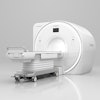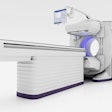A new way to identify a discrete form of dysanapsis could help clarify disproportionate growth between size of the airway tree and lung size and improve understanding of the progression of chronic obstructive pulmonary disease (COPD), according to research presented December 1 at RSNA 2024 in Chicago.
For years, researchers have questioned the underpinnings dysanapsis (the mismatch between airways and lung size), as intrinsic or pathologic, according to Stephanie Marie Aguilera from the Center for Lung Analysis and Imaging Research in the Department of Biomedical Engineering at the University of Alabama at Birmingham (UAB). Understanding is limited by what imaging metrics currently capture, she said.
Currently, measurements focus on the width of the airways along 19 locations from the trachea down to smaller airway branches. CT scans visualize the airway tree and add an additional calculation that accounts for how airways might change such as by age, height, and sex. It is a time-consuming approach, according to Aguilera.
While the current approach has been validated and linked to COPD risk, it has several key limitations, Aguilera explained during her talk. It only samples a fraction of the airway tree and potentially misses important variation in the peripheral airways.
Also, reliance on reference equations from other populations may not fully represent the demographic diversity in different inflammatory disease cohorts and, ultimately, the yield is less reflective of the actual airway-to-lung size mismatch.
UAB researchers aimed to optimize distal airway quantification to better reflect discrete dysanapsis by measuring the total volume of the entire airway tree compared to total lung volume. Their study analyzed inspiratory CT scans from 8,102 patients enrolled in the Genetic Epidemiology of COPD (COPDGene) study of former and current smokers. Between segmentation and volumetric quantification, their method takes approximately 5 minutes, Aguilera said.
The team derived a more anatomically accurate 3D volumetric measure of dysanapsis using airway-to-lung volume ratio, according to Aguilera. They hypothesized that greater volumetric dysanapsis, indicated by lower airway-to-lung volume ratio, would be associated with respiratory morbidity and mortality in COPD.
Further, they categorized volumetric dysanapsis into quartiles and performed multivariable Cox proportional hazards analysis to test its association with mortality.
In adjusted multivariable analyses, volumetric dysanapsis was independently associated with lower lung function, worsened shortness of breath and quality of life, and increased mortality, the team found. The study showed forced expiratory volume (FEV)1 (β = -0.03 L, 95%CI -0.01 to -0.04, p < 0.001), FEV1/FVC (β = -0.025 , 95%CI -0.022 to -0.027; p < 0.001), 6-min-walk distance (β = -2.68 m; 95%CI -3.55 to -1.81; p < 0.001), SGRQ score (β = 0.74, 95%CI 0.23 to 1.25, p = 0.004), mMRC dyspnea score (β = 0.03, 95% CI 0.01 to 0.06, P =0.021), and lung function decline (β = -3.48 ml/year; 95%CI -5.28 to -1.69; p < 0.001).
The research asserts that assessing volumetric dysanapsis can significantly enhance early COPD screening before major symptoms arise.
"Many times, individuals without airflow obstruction may not be considered at high risk, but in this study, CT scans revealed important structural relationships between airways and lung volume that could indicate future COPD risk," Aguilera said.
For full 2024 RSNA coverage, visit our RADCast.




















